SpringSecurity
11. SpringSecurity
11.1 SpringSecurity简介
Spring 是一个非常流行和成功的 Java 应用开发框架。Spring Security 基于 Spring 框架,提供了一套 Web 应用安全性的完整解决方案。一般来说,Web 应用的安全性包括用户认证(Authentication)和用户授权(Authorization)两个部分。用户认证指的是验证某个用户是否为系统中的合法主体,也就是说用户能否访问该系统。用户认证一般要求用户提供用户名和密码。系统通过校验用户名和密码来完成认证过程。用户授权指的是验证某个用户是否有权限执行某个操作。在一个系统中,不同用户所具有的权限是不同的。比如对一个文件来说,有的用户只能进行读取,而有的用户可以进行修改。一般来说,系统会为不同的用户分配不同的角色,而每个角色则对应一系列的权限。
11.2 实验环境搭建
1、新建springboot项目
引入web模块、thymeleaf模块
<dependency>
<groupId>org.springframework.boot</groupId>
<artifactId>spring-boot-starter-web</artifactId>
</dependency>
<!--thymeleaf -->
<dependency>
<groupId>org.springframework.boot</groupId>
<artifactId>spring-boot-starter-thymeleaf</artifactId>
<version>2.5.6</version>
</dependency>
2、导入静态资源
index.html
|views
|level1
1.html
2.html
3.html
|level2
1.html
2.html
3.html
|level3
1.html
2.html
3.html
Login.html
3、controller跳转
package com.dzj.controller;
import org.springframework.stereotype.Controller;
import org.springframework.web.bind.annotation.PathVariable;
import org.springframework.web.bind.annotation.RequestMapping;
@Controller
public class RouterController {
@RequestMapping({"/","/index"})
public String toIndex(){
return "index";
}
@RequestMapping("/toLogin")
public String toLogin(){
return "views/login";
}
@RequestMapping("/level1/{id}")
public String toLevel1(@PathVariable("id")int id){
return "views/level1/"+id;
}
@RequestMapping("/level2/{id}")
public String toLevel2(@PathVariable("id")int id){
return "views/level2/"+id;
}
@RequestMapping("/level3/{id}")
public String toLevel3(@PathVariable("id")int id){
return "views/level3/"+id;
}
}
11.3 认识SpringSecurity
Spring Security 是针对Spring项目的安全框架,也是Spring Boot底层安全模块默认的技术选型,他可以实现强大的Web安全控制,对于安全控制,我们仅需要引入 spring-boot-starter-security 模块,进行少量的配置,即可实现强大的安全管理!
记住几个类:
- WebSecurityConfigurerAdapter:自定义Security策略
- AuthenticationManagerBuilder:自定义认证策略
- @EnableWebSecurity:开启WebSecurity模式
Spring Security的两个主要目标是 “认证” 和 “授权”(访问控制)。
“认证”(Authentication)
身份验证是关于验证您的凭据,如用户名/用户ID和密码,以验证您的身份。
身份验证通常通过用户名和密码完成,有时与身份验证因素结合使用。
“授权” (Authorization)
授权发生在系统成功验证您的身份后,最终会授予您访问资源(如信息,文件,数据库,资金,位置,几乎任何内容)的完全权限。
这个概念是通用的,而不是只在Spring Security 中存在。
1、认证和授权
目前,我们的测试环境,是谁都可以访问的,我们使用 Spring Security 增加上认证和授权的功能
引入 Spring Security 模块
<!-- security-->
<dependency>
<groupId>org.springframework.boot</groupId>
<artifactId>spring-boot-starter-security</artifactId>
</dependency>
编写SpringSecurity配置类
参考官网:https://spring.io/projects/spring-security
查看我们自己项目中的版本,找到对应的帮助文档:
https://docs.spring.io/spring-security/site/docs/5.5.3.RELEASE/reference/html5
进行全文搜索:WebSecurityConfigurerAdapter
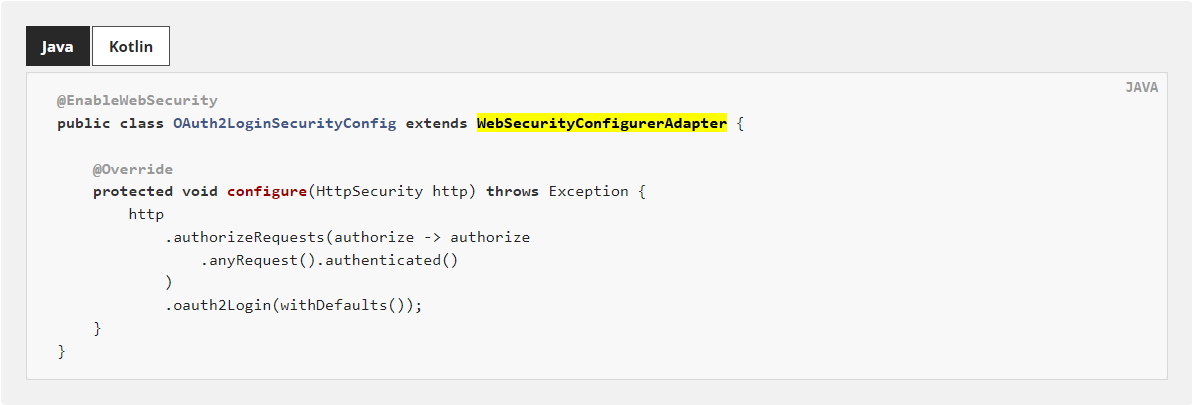
编写基础配置类
package com.dzj.config;
import org.springframework.security.config.annotation.web.builders.HttpSecurity;
import org.springframework.security.config.annotation.web.configuration.EnableWebSecurity;
import org.springframework.security.config.annotation.web.configuration.WebSecurityConfigurerAdapter;
@EnableWebSecurity // 开启WebSecurity模式
public class SecurityConfig extends WebSecurityConfigurerAdapter {
//定义授权规则
@Override
protected void configure(HttpSecurity http) throws Exception {
}
//定义认证规则
@Override
protected void configure(AuthenticationManagerBuilder auth) throws Exception {
}
}
定制请求的授权规则
@Override
protected void configure(HttpSecurity http) throws Exception {
// 定制请求的授权规则
// 首页所有人可以访问
http.authorizeRequests().antMatchers("/").permitAll()
.antMatchers("/level1/**").hasRole("vip1")
.antMatchers("/level2/**").hasRole("vip2")
.antMatchers("/level3/**").hasRole("vip3");
}
测试一下,发现除了首页都进不去了!因为我们目前没有登录的角色,因为请求需要登录的角色拥有对应的权限才可以!
在configure()方法中加入以下配置,开启自动配置的登录功能!
// 开启自动配置的登录功能
// /login 请求来到登录页
// /login?error 重定向到这里表示登录失败
http.formLogin();
测试发现,没有权限的时候,会跳转到登录的页面!
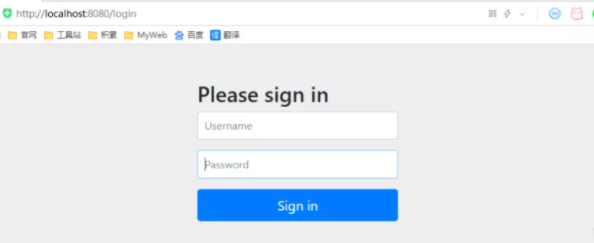
查看刚才登录页的注释信息,我们可以定义认证规则,重写configure(AuthenticationManagerBuilder auth)方法
//定义认证规则
@Override
protected void configure(AuthenticationManagerBuilder auth) throws Exception {
//在内存中定义,也可以在jdbc中去拿....
auth.inMemoryAuthentication()
.withUser("dengzj").password("aadzj").roles("vip2","vip3")
.and()
.withUser("root").password("aadzj").roles("vip1","vip2","vip3")
.and()
.withUser("guest").password("aadzj").roles("vip1","vip2");
}
测试,我们可以使用这些账号登录进行测试!发现会报错!There is no PasswordEncoder mapped for the id “null”
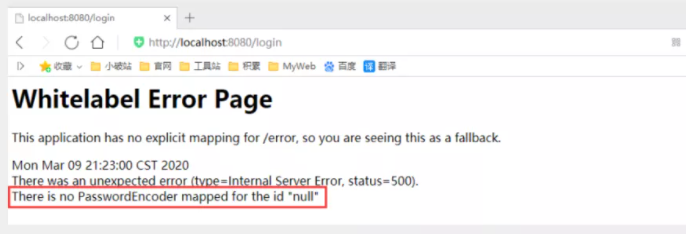
原因,我们要将前端传过来的密码进行某种方式加密,否则就无法登录,修改代码
//认证
//密码编码:passwordEncoder,需要对密码进行加密处理
//在SpringSecurity 5.0+ 中新增了很多的加密方法~
@Override
protected void configure(AuthenticationManagerBuilder auth) throws Exception {
//Spring security 5.0中新增了多种加密方式,也改变了密码的格式。
//要想我们的项目还能够正常登陆,需要修改一下configure中的代码。我们要将前端传过来的密码进行某种方式加密
//spring security 官方推荐的是使用bcrypt加密方式。
auth.inMemoryAuthentication().passwordEncoder(new BCryptPasswordEncoder())
.withUser("dengzi").password(new BCryptPasswordEncoder().encode("aadzj")).roles("vip2","vip3")
.and()
.withUser("root").password(new BCryptPasswordEncoder().encode("aadzj")).roles("vip1","vip2","vip3")
.and()
.withUser("guest").password(new BCryptPasswordEncoder().encode("aadzj")).roles("vip1");
}
测试,发现,登录成功,并且每个角色只能访问自己认证下的规则!搞定
2、权限控制和注销
开启自动配置的注销的功能
//定制请求的授权规则
@Override
protected void configure(HttpSecurity http) throws Exception {
//....
//开启自动配置的注销的功能
// /logout 注销请求
http.logout();
}
在前端增加一个注销的按钮,index.html 导航栏中
<a class="item" th:href="@{/logout}">
<i class="sign-out icon"></i> 注销
</a>
测试一下,登录成功后点击注销,发现注销完毕会跳转到登录页面!
但是,如果想注销成功后,依旧可以跳转到首页,该怎么处理呢?
// .logoutSuccessUrl("/"); 注销成功来到首页
http.logout().logoutSuccessUrl("/");
测试,注销完毕后,发现跳转到首页OK
根据真实网站需求定制
用户没有登录的时候,导航栏上只显示登录按钮,用户登录之后,导航栏可以显示登录的用户信息及注销按钮!还有就是,比如 dengzj 这个用户,它只有 vip2,vip3功能,那么登录则只显示这两个功能,而vip1的功能菜单不显示,这个就是真实的网站情况,该如何做呢?
我们需要结合thymeleaf中的一些功能,导入security-thymeleaf整合包
<!-- security-thymeleaf整合包 -->
<dependency>
<groupId>org.thymeleaf.extras</groupId>
<artifactId>thymeleaf-extras-springsecurity5</artifactId>
<version>3.0.4.RELEASE</version>
</dependency>
sec:authorize="isAuthenticated()" :判断是否认证登录,显示不同的信息
修改前端页面(index.html)
导入命名空间
xmlns:th="http://www.thymeleaf.org"
xmlns:sec="http://www.thymeleaf.org/extras/spring-security"
修改导航栏,增加认证判断
<!--登录注销-->
<div class="right menu">
<!--如果未登录,显示登陆按钮-->
<div sec:authorize="!isAuthenticated()">
<a class="item" th:href="@{/toLogin}">
<i class="address card icon"></i> 登录
</a>
</div>
<!--如果登录,显示用户名、注销-->
<div sec:authorize="isAuthenticated()">
<a class="item">
用户名:<span sec:authentication="name"></span>
角色:<span sec:authentication="principal.authorities"></span>
</a>
</div>
<div sec:authorize="isAuthenticated()">
<a class="item" th:href="@{/logout}">
<i class="sign-out icon"></i> 注销
</a>
</div>
</div>
重启测试,登录成功后确实显示了我们想要的页面
关闭csrf功能
如果注销404了,就是因为它默认防止csrf跨站请求伪造,产生安全问题,我们可以将请求改为post表单提交,或者在spring security中关闭csrf功能,在配置中增加:http.csrf().disable();
http.csrf().disable();//关闭csrf功能:跨站请求伪造,默认只能通过post方式提交logout请求
http.logout().logoutSuccessUrl("/");
角色功能块认证 sec:authorize="hasRole('xxx')"
<div class="ui three column stackable grid">
<!--菜单根据用户不同权限动态实现 sec:authorize="hasRole('vip1')" -->
<div class="column" sec:authorize="hasRole('vip1')">
<div class="ui raised segment">
<div class="ui">
<div class="content">
<h5 class="content">Level 1</h5>
<hr>
<div><a th:href="@{/level1/1}"><i class="bullhorn icon"></i> Level-1-1</a></div>
<div><a th:href="@{/level1/2}"><i class="bullhorn icon"></i> Level-1-2</a></div>
<div><a th:href="@{/level1/3}"><i class="bullhorn icon"></i> Level-1-3</a></div>
</div>
</div>
</div>
</div>
<div class="column" sec:authorize="hasRole('vip2')">
<div class="ui raised segment">
<div class="ui">
<div class="content">
<h5 class="content">Level 2</h5>
<hr>
<div><a th:href="@{/level2/1}"><i class="bullhorn icon"></i> Level-2-1</a></div>
<div><a th:href="@{/level2/2}"><i class="bullhorn icon"></i> Level-2-2</a></div>
<div><a th:href="@{/level2/3}"><i class="bullhorn icon"></i> Level-2-3</a></div>
</div>
</div>
</div>
</div>
<div class="column" sec:authorize="hasRole('vip3')">
<div class="ui raised segment">
<div class="ui">
<div class="content">
<h5 class="content">Level 3</h5>
<hr>
<div><a th:href="@{/level3/1}"><i class="bullhorn icon"></i> Level-3-1</a></div>
<div><a th:href="@{/level3/2}"><i class="bullhorn icon"></i> Level-3-2</a></div>
<div><a th:href="@{/level3/3}"><i class="bullhorn icon"></i> Level-3-3</a></div>
</div>
</div>
</div>
</div>
</div>
登录测试,成功!权限控制和注销搞定!
3、记住我功能
现在的情况,我们只要登录之后,关闭浏览器,再登录,就会让我们重新登录,但是很多网站的情况,就是有一个记住密码的功能,这个该如何实现呢?
开启记住我功能
//定制请求的授权规则
@Override
protected void configure(HttpSecurity http) throws Exception {
// ......
//记住我
http.rememberMe();
}
启动测试,查看浏览器的cookie
再次启动项目测试,发现登录页多了一个记住我功能,登录之后关闭浏览器,然后重新打开浏览器访问,发现用户依旧存在!
如何实现的呢?其实非常简单,我们可以查看浏览器的cookie
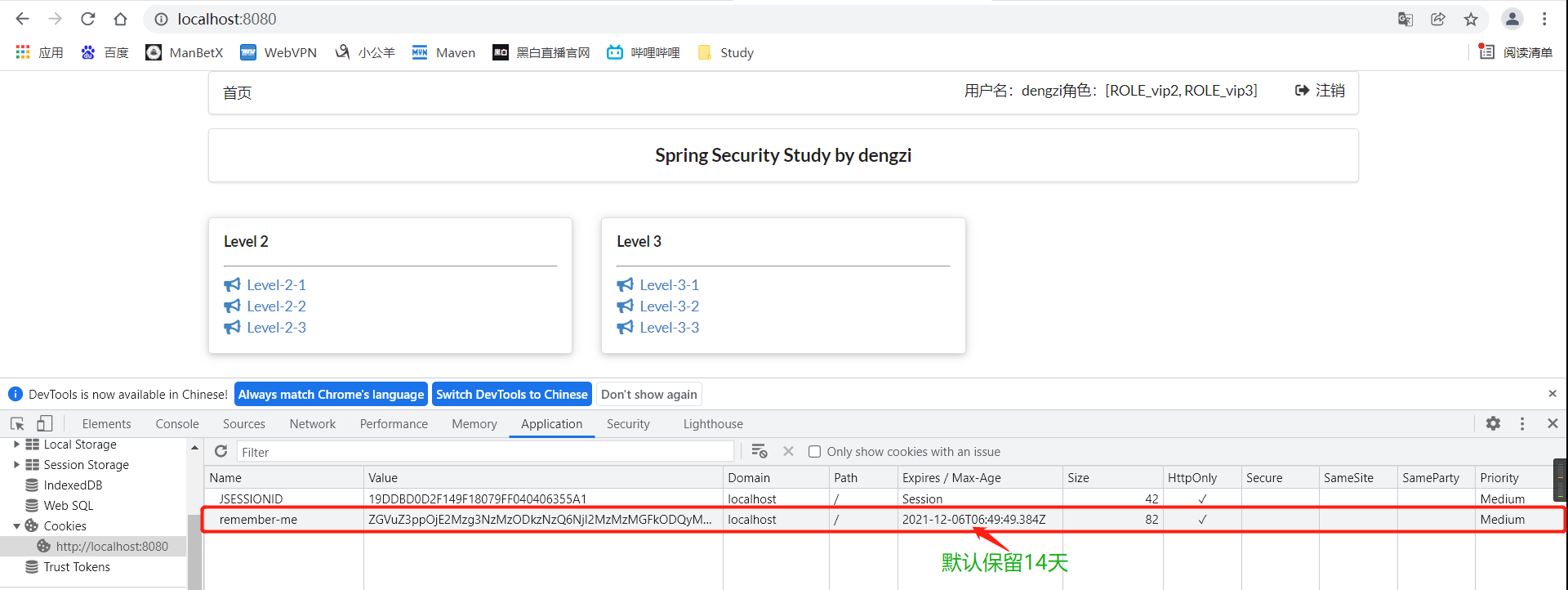
注销时cookie的删除 spring security 帮我们自动删除 cookie
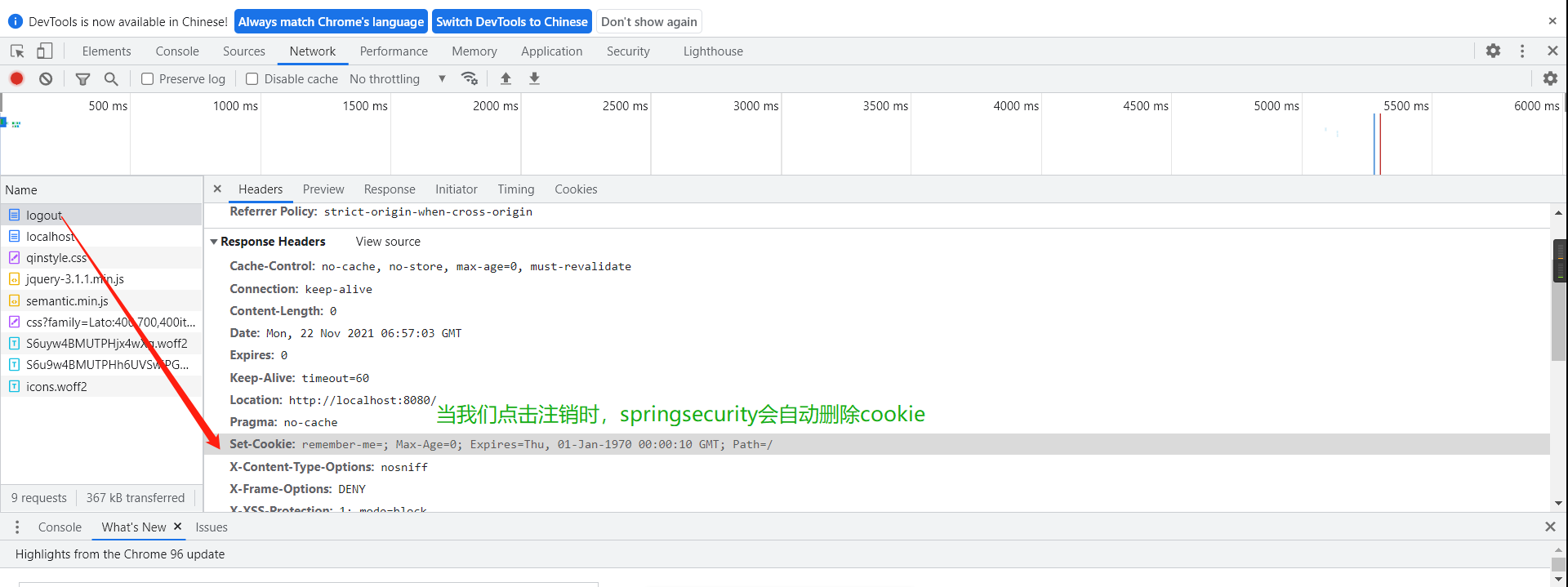
结论
登录成功后,将cookie发送给浏览器保存,以后登录带上这个cookie,只要通过检查就可以免登录了,如果点击注销,则会删除这个cookie。
4、定制登录页
现在这个登录页面都是spring security 默认的,怎么样可以使用我们自己写的Login界面呢?
在刚才的登录页配置后面指定 loginpage
http.formLogin().loginPage("/toLogin");
//http.formLogin().loginPage("/toLogin").usernameParameter("user").passwordParameter("pwd").loginProcessingUrl("/login");
前端也需要指向我们自己定义的 login 请求
<div sec:authorize="!isAuthenticated()">
<a class="item" th:href="@{/toLogin}">
<i class="address card icon"></i> 登录
</a>
</div>
login.html页面配置
请求登录,需要将这些信息发送到哪里,我们也需要配置,login.html 配置提交请求及方式,方式必须为post,在 loginPage()源码中的注释上有写明:

<form th:action="@{/login}" method="post">
<div class="field">
<label>Username</label>
<div class="ui left icon input">
<input type="text" placeholder="Username" name="user">
<i class="user icon"></i>
</div>
</div>
<div class="field">
<label>Password</label>
<div class="ui left icon input">
<input type="password" name="pwd">
<i class="lock icon"></i>
</div>
</div>
<div class="field">
<input type="checkbox" name="remember">记住我
</div>
<input type="submit" class="ui blue submit button"/>
</form>
接收登录的用户名和密码的参数
这个请求提交上来,我们还需要验证处理,怎么做呢?我们可以查看formLogin()方法的源码!我们配置接收登录的用户名和密码的参数!
http.formLogin()
.usernameParameter("username")
.passwordParameter("password")
.loginPage("/toLogin")
.loginProcessingUrl("/login"); // 登陆表单提交请求
在登录页增加记住我的多选框
<div class="field">
<input type="checkbox" name="remember">记住我
</div>
后端验证处理 rememberMe()
//开启记住我功能,默认保存时间两周
http.rememberMe().rememberMeParameter("remember");
测试,OK!搞定!
5、完整配置代码(SecurityConfig.java)
package com.dzj.config;
import org.springframework.security.config.annotation.authentication.builders.AuthenticationManagerBuilder;
import org.springframework.security.config.annotation.web.builders.HttpSecurity;
import org.springframework.security.config.annotation.web.configuration.EnableWebSecurity;
import org.springframework.security.config.annotation.web.configuration.WebSecurityConfigurerAdapter;
import org.springframework.security.crypto.bcrypt.BCryptPasswordEncoder;
@EnableWebSecurity
public class SecurityConfig extends WebSecurityConfigurerAdapter {
//定义授权规则
@Override
protected void configure(HttpSecurity http) throws Exception {
//首页所有人可以访问,功能也只有有对应权限的人才能访问
//请求授权的规则
http.authorizeRequests().antMatchers("/").permitAll()
.antMatchers("/level1/**").hasRole("vip1")
.antMatchers("/level2/**").hasRole("vip2")
.antMatchers("/level3/**").hasRole("vip3");
//没有权限会跳转到登录页,需要开启登录的页面
http.formLogin().loginPage("/toLogin").usernameParameter("username").passwordParameter("password").loginProcessingUrl("/login");
//防止网站攻击
http.csrf().disable(); //关闭csrf功能,登录失败存在的原因
//注销
http.logout().logoutSuccessUrl("/"); //注销成功后跳转到哪个位置
//开启记住我功能,默认保存时间两周
http.rememberMe().rememberMeParameter("remember");
}
//定义认证规则
@Override
protected void configure(AuthenticationManagerBuilder auth) throws Exception {
//在内存中定义,也可以在jdbc中去拿....
//Spring security 5.0中新增了多种加密方式,也改变了密码的格式。
//要想我们的项目还能够正常登陆,需要修改一下configure中的代码。我们要将前端传过来的密码进行某种方式加密
//spring security 官方推荐的是使用bcrypt加密方式。
auth.inMemoryAuthentication().passwordEncoder(new BCryptPasswordEncoder())
.withUser("dengzi").password(new BCryptPasswordEncoder().encode("aadzj")).roles("vip2","vip3")
.and()
.withUser("root").password(new BCryptPasswordEncoder().encode("aadzj")).roles("vip1","vip2","vip3")
.and()
.withUser("guest").password(new BCryptPasswordEncoder().encode("aadzj")).roles("vip1");
}
}
本文来自博客园,作者:小公羊,转载请注明原文链接:https://www.cnblogs.com/aadzj/p/15636802.html


